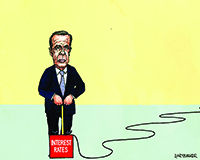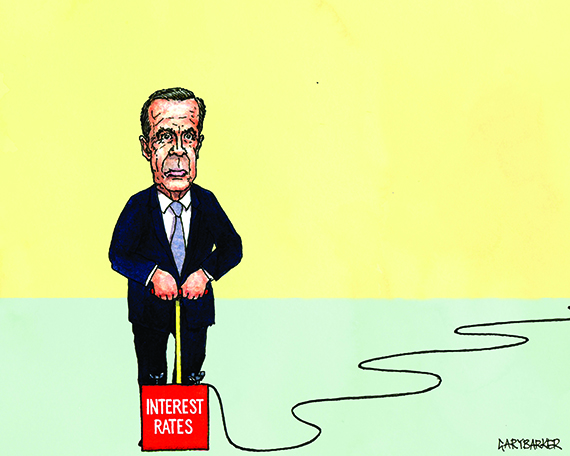Unless something unexpected happens, the first Bank of England rate hike since 2007 – and the first move in any direction since March 2009 – will happen in the next few months.
America’s Federal Reserve Board is likely to move first, perhaps as early as September, and the Bank will follow shortly afterwards though, as members of the monetary policy committee have said, they are not waiting for permission from the Fed.
How seriously should we take the Bank’s warnings of a rate hike? After all Mark Carney, the Bank governor, set pulses racing in June last year by warning that rates could rise sooner than markets expected, which most interpreted as meaning a move before the end of 2014. But the governor soon changed tack and nothing happened. Until recently, the Bank’s signals were far from clear.
This time, however, seems to be different. Carney has deliberately repeated his comments about a rate rise being likely around the turn of the year and he has been explicit about the likely path of rates after that first move; a gradual increase to about half pre-crisis levels, in other words to between 2% and 2.5%.
Other Monetary Policy Committee members, including the normally dovish David Miles, have echoed the governor’s warning. Miles, whose stint on the MPC finishes at the end of August, may not be around for the hike, but others will be. Two or three members are expected to soon start voting for higher rates. The MPC’s July minutes suggested they were waiting for the Greek crisis to be resolved before doing so. The drumbeat is getting louder.
What will it mean for property? I would make three points. The first is that it would be wrong to say that there will not be an impact from higher rates. Despite the Bank’s best efforts to calm things, the first rate hike for many years will be big news. Small changes can generate big headlines and, despite all the noises about gradualism and a new lower norm for rates, some people will be scared by the prospect of higher borrowing costs.
Secondly, rate rises will be a test of “extend and pretend” by lenders, much of which has been in commercial property. Projects that could be left on ice for the long-term when the cost of borrowing was ultra low will be re-assessed. The start of the process of hiking rates will provoke some distressed sales. The banks have sold off a lot of their property portfolios in recent years but there may be more to come.
Thirdly, and importantly, the economy is in better shape to take higher rates than it was two or three years ago. That is not just because the recovery is stronger and more mature, but also because the margins between typical lending rates and the Bank Rate have been coming down. As the banks have rebuilt their capital, they have been able to offer keener lending terms.
For some, even modest rate hikes will be painful, although I am sceptical about the extent to which it will bring the surge in repossessions and failures that only near-zero interest rates prevented a few years ago.
In the end a move back towards normality for interest rates is a sign that the economy is moving beyond monetary life support. But not everybody will see it that way.
David Smith is economics editor at The Sunday Times












